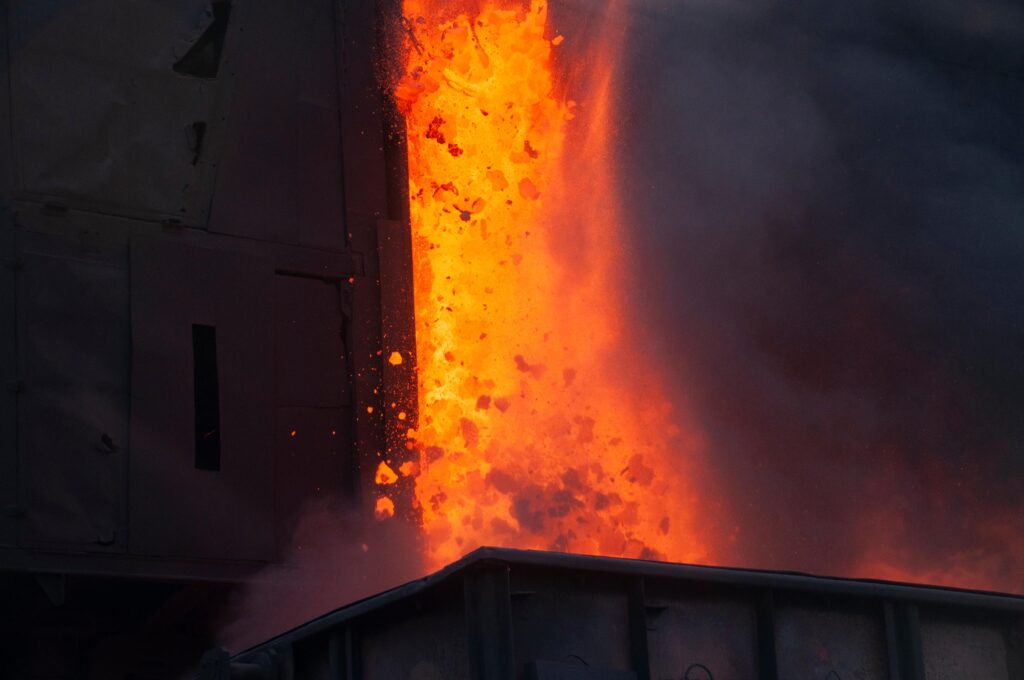A Coke oven is a crucial piece of equipment for coking enterprises. It is a thermal kiln with a complex structure consisting of several parts such as a bare roof, slight flue, regenerator, ramp, combustion chamber, furnace area, and others. The furnace age is typically between 30 to 35 years. The durability of the coke oven depends on several factors such as the quality of the furnace body masonry, the design of the furnace body structure, and the performance of the refractory material used. During operation, most of the masonry is challenging to repair while hot. Hence, it is crucial to use refractory materials that can adapt to the requirements of the coking production process and are long-lasting.
The refractory materials used for furnace construction should have properties that suit the characteristics of coking production, the tasks undertaken, the temperature endured, the structural loads carried, the mechanical damage suffered, and the medium erosion. As a result, varying refractory materials are needed for different sections of the Coke oven structure.
- Refractory materials for the combustion chamber (carbonization chamber) and chute
The carbonization chamber’s work is cyclical, and the vertical flue temperature of the combustion chamber can reach up to 1300℃ during average production. The wall of the combustion chamber is responsible for transferring the heat required for coking, requiring the furnace material to have good high-temperature thermal conductivity. The partition wall of the combustion chamber also bears the structural load of the upper masonry and the gravity of the coal loading car on the top of the furnace. Thus, the furnace building materials should have the performance of not deforming under high-temperature load.
The carbonization chamber’s surface on the combustion chamber wall is subject to ash content, slag, moisture, and acid gas erosion, while methane seeps into the gaps of the brick body to produce carbon deposits. The bottom of the flue is eroded by slag erosion of coal dust and dirt, requiring the furnace building materials to have high-temperature corrosion resistance.
When coal is charged, the temperature of the carbonization chamber surface of the combustion chamber wall drops sharply from above 1000℃ to 600~700℃. Hence, the furnace building material should have the performance of resisting high-temperature drastic changes above 600°C. The wall of the combustion chamber and the bottom of the carbonization chamber are built with silica bricks due to the influence of coke pushing, which requires them to have high wear resistance.
The furnace heads located at the two ends of the carbonization chamber undergo rapid temperature fluctuations when the furnace door is opened, going from over 1000℃ to below 500℃, surpassing the temperature threshold (573℃) for maintaining the volume stability of silica bricks. Hence, the furnace head should be selected with suitable thermal shock resistance materials. Third-class high-alumina bricks were used for the original coke oven head below 6m, while andalusite bricks are used in some 6m coke ovens, and catenary bricks are used in 7.63m coke ovens.
- Refractories for Regenerators
The middle and upper shells of large and medium-sized coke oven regenerators are constructed using silica bricks to ensure even expansion of the entire coke oven. The temperature difference between the upper and lower layers of the checker bricks in the regenerator can reach around 1000℃. Moreover, the temperature difference between the updraft and downdraft is between 300 to 400℃, which requires the checker brick material to possess high volume density and excellent resistance to sudden temperature changes. For modern 6m coke ovens, alkaline oxide low-alumina clay bricks with minimal impurities are preferred. For 7.63m coke ovens, bricks with Al2O3 content greater than 40% are used at the top, bricks with Al2O3 content ranging from 30% to 36% are used in the middle, and semi-silica bricks with SiO2 content greater than 70% are used at the bottom, respectively.
- Refractory Materials for Slight Flue
The temperature of the small flue is lower than 100℃ when there is an updraft, and it rises above 300℃ during downdraft. Therefore, the furnace building material should be capable of withstanding sudden temperature changes below 300℃. Silica bricks are utilized for the single wall of the furnace in 6m coke ovens, while clay bricks are employed as lining bricks inside to withstand intermittent temperature variations. In contrast, semi-silica bricks with excellent thermal shock resistance are used for 7.63m coke ovens.
- Refractory Materials for Furnace and Foundation Roof
The top area of the furnace, after the carbonization chamber, is covered by the furnace roof, which primarily comprises clay bricks separating the principal structure of the stove. Insulation materials fill the partitioned area. The surface of the furnace roof is covered with compact, waterproof, and wear-resistant clinker bricks.
The foundation roof, located beneath the slight flue, was initially built with four layers of red bricks, requiring strength greater than 10MPa. However, current insulation requirements necessitate the use of high-strength, lightweight insulation bricks, which are built in three layers.


